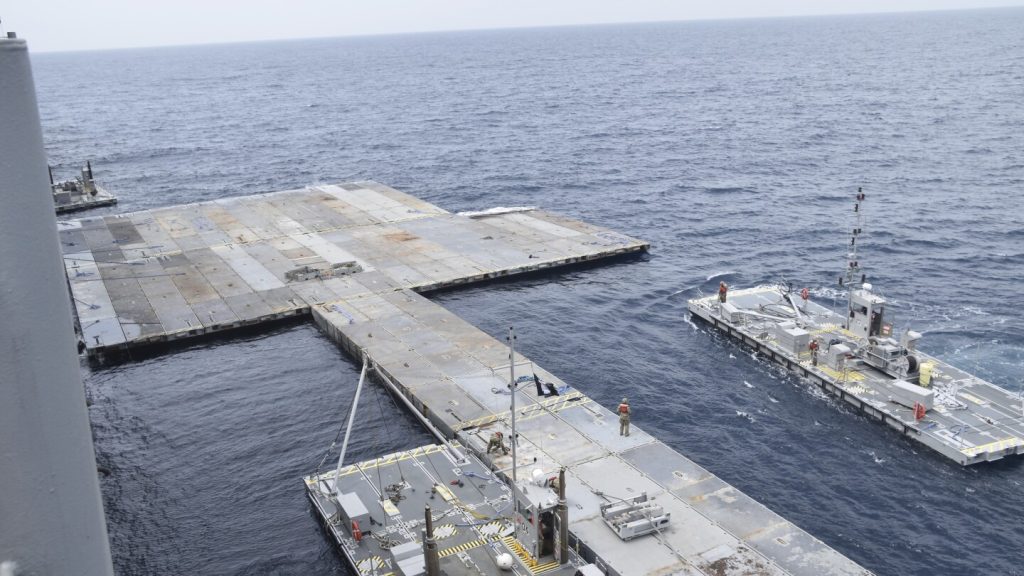President Joe Biden’s administration is working to open a new sea route to deliver humanitarian aid to Gaza, as the conflict between Israel and Hamas intensifies. The U.S. military is set to deploy a floating pier and causeway in the eastern Mediterranean to facilitate aid delivery. However, concerns remain about the effectiveness of this sea route, as Israeli restrictions at land crossings have made it difficult for aid to reach Gaza. Humanitarian groups are monitoring the situation to see if Israeli officials will allow a freer flow of aid through the sea route compared to land crossings.
Critics of the U.S.-built pier and sea route argue that the land crossings could bring in all the necessary aid if Israeli officials granted permission. Scott Paul of Oxfam believes that the sea route is an unnecessary solution to a problem that could be resolved with cooperation from Israel. The success of the maritime corridor hinges on Israel’s willingness to allow aid through its screening process and ensure the safety of aid workers within Gaza. Without Israel’s cooperation, the costly alternative of the sea route may not be effective in addressing the humanitarian crisis in Gaza.
Despite Israeli promises to increase aid trucks entering Gaza and protect aid workers, challenges persist in distributing aid within the region. The ongoing conflict and fighting have resulted in food and aid shortages, leading to famine in northern Gaza that is spreading south. While some progress has been made in increasing aid deliveries, restrictions imposed by Israeli officials continue to hinder humanitarian efforts. As Israeli military operations disrupt aid operations, fuel and aid deliveries are being cut off, exacerbating the already dire situation in Gaza.
The safety of humanitarian workers remains a significant concern, as attacks on aid convoys and staff members have increased. Israel’s failure to provide adequate protection for aid missions within Gaza has raised doubts about the effectiveness of the sea route. The lack of a functioning deconfliction system and assurances of safety for aid workers further complicate the delivery of aid. International organizations like Human Rights Watch have highlighted the risks faced by humanitarian teams operating in Gaza and called for better security measures to prevent further attacks on aid workers.
The U.S. Agency for International Development (USAID) is working to coordinate aid distribution through the sea route, while emphasizing the need for Israel to ensure the safety of humanitarian actors. Despite logistical challenges and security concerns, aid organizations like the U.N. World Food Program are committed to delivering aid to Gaza through the sea route. The ongoing conflict in Gaza has created a volatile environment for humanitarian operations, but efforts to provide essential aid to the region persist, albeit with significant challenges.
As the Biden administration’s initiative to deliver humanitarian aid to Gaza through a new sea route unfolds, the success of this endeavor will depend on Israel’s cooperation and commitment to ensuring the safety of aid workers. While the sea route offers a potential alternative to land crossings, challenges related to security, coordination, and access remain obstacles to effectively addressing the humanitarian crisis in Gaza. As international efforts continue to provide aid to Gaza, the urgent need for food, medical supplies, and other essential resources in the region underscores the importance of finding sustainable solutions to alleviate the suffering of Palestinians affected by the conflict.


